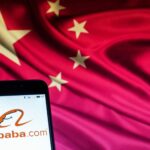In Part I of this two-part blog on Apple, we discussed some of the criticisms that Apple faced as an investment case on its journey to a $1 trillion market capitalisation. This Part II will take a look at some of the lenses through which we can view Apple as a business, to better understand Apple’s prospects of growing another trillion.
Apple the innovator
One popular lens through which to view Apple is that of the innovator. It is hard to deny that Apple, and more specifically Steve Jobs, have been forces of innovation in the modern technology era. The early Apple was a pioneer of the mouse and the Graphical User Interface that we now take for granted. The trajectory of the smartphone was undoubtedly shaped by the iPhone, despite Microsoft’s early dominance of the nascent smartphone industry via its Windows Mobile operating system. The iPad introduced an entirely new form factor to the masses, and Apple led the way with wearables from the Watch to the AirPods. It seems that at every important juncture in personal computing, Apple has captured the lion’s share of profits in the category despite never being first to market.
Considering Apple’s historical achievements, one might be tempted to extrapolate this innovative streak far into the future. But to do so would be to conflate sustaining innovation with disruptive innovation. Sustaining innovation is incremental innovation that builds upon an existing product. Much of Microsoft’s innovation in the mid-2000’s was sustaining innovation that sustained Windows’ dominance. Even Windows Mobile, launched well before iOS and under the “Windows is the centre of everything” model, was a sustaining innovation intended to extend Microsoft’s monopoly over mobile operating systems. Steve Ballmer’s failure to see the smartphone, and the iPhone in particular, as a disruptive innovation ultimately allowed Apple to beat Microsoft in the smartphone software and hardware war.* In much the same way, Apple’s innovations since the original iPhone have been sustaining innovations – despite introducing faster computers, tablets, smartwatches, wireless earphones and smart home devices, everything still revolves around the iPhone.
Apple the disruptor
Having established that substantially all the innovations in the smartphone industry have been sustaining innovations since the early days of the iPhone, can a case be made for Apple as a disruptor? The iPhone was unquestionably a disruptive innovation – it was a new form factor for a computer, a new model of distribution (the App Store), and completely changed the way we communicate and consume information. Having disrupted an industry once, is Apple capable of doing it again?
The first step to contemplating an answer is establishing what disruption actually means, for it has become an industry buzz word to describe virtually anything that didn’t exist yesterday. We can broadly split “disruption” into two categories: low cost disruption and new business/use case disruption. Low cost disruption is what we see most often, and is more prevalent when it comes to physical goods and services. An incumbent is disrupted when an upstart can offer a similar good or service at a sustainably lower cost. In fact, Apple bears argued for years that cheap Android smartphones would eventually become “good enough” and disrupt the expensive iPhone. As I discussed in Part I, the combination of Apple’s product design, brand and closed ecosystem has not only fended off cheaper Android competitors, but allowed Apple to consistently raise its iPhone prices in the face of increasing competition. Unsurprisingly though, this means Apple will never be a low-cost disruptor itself.
What of new business disruption then? This type of disruption occurs when a company creates an entirely new business model or use case for an existing product, which can result in entire industries being upheaved. For example, opening a 5-star hotel and charging $100 a night is not going to disrupt the Ritz Carlton next door (a misguided attempt at low cost disruption). Airbnb instead created a new business model that allowed property owners to rent out their properties to guests at typically lower prices than hotels, while Airbnb collected a platform fee. Uber created a new business model that leveraged platform economics to connect demand for transportation with supply of transportation, and in the process disrupted the taxi industry.
Given where we are in the smartphone cycle and how incremental the innovations have become, I do not believe Apple can achieve new business disruption as its business segments currently stand. Substantially all of Apple’s segments, including its lucrative services business, revolve around the iPhone, and it is unlikely the smartphone will remain the form factor for the next major disruption in personal computing. Apple’s investments in Augmented Reality (AR) and wearables, especially the Watch, are promising, but AR’s potential is currently limited by the smartphone form factor, and the Watch is limited by size and interface.
One interesting “disruption” that many Apple aficionados may suggest is the Apple Car. Very little is currently known about the Apple Car – whether it will be an operating system or an actual car, and what the business model will be. But let’s briefly entertain this suggestion. Apple’s DNA is in product design, or “selling hardware differentiated by software at a premium”. If Apple remained true to its DNA, the Apple Car would be a physical car with a CarOS operating system. This hypothesis would present all sorts of problems for Apple, and we can be confident of this because an Apple Car equivalent already exists in the form of Tesla.
Tesla is in many ways the anti-Apple – strong focus on product design and selling hardware at a premium, but without the lock-in of the Apple ecosystem nor the profits of Apple’s products. Tesla’s myriad of problems are a good indication of the challenges Apple may face if it decides to produce a physical car. Manufacturing may prove a challenge just as it has for Tesla, since Apple has no manufacturing expertise (outsourced to China) and contract manufacturing for cars likely doesn’t exist on the same scale or quality. Furthermore, for all of Tesla’s supporters’ early trumpeting of the car company as a disruptor of the ICE OEMs, Tesla is finding that its premium-priced products are susceptible to low cost disruption as incumbent OEMs catch up on EV technology.
If the Apple Car turns out to be an autonomous operating system instead, it would mark a dramatic departure away from Apple’s prevailing model of having complete control over the ecosystem from hardware to software – arguably a key competitive advantage that has allowed Apple to defend its position at the top of the smartphone ladder. But a more pertinent issue that Apple may face is one that makes its iPhone so strong – the developer community. There are over 1.3 billion active Apple devices globally, which means a very lucrative and deep market for iOS app developers. On the other hand, a CarOS might have less than a million active installations at the beginning, and take decades to grow to any scale. This means very shallow profit pools for developers and little incentive to develop apps for the CarOS.
Regardless of what eventually transpires, it would be imprudent for an investor to ascribe any material value to Apple’s future disruptive capabilities. Fortunately, we believe investors are getting any and all of these options for free, as in our opinion Apple’s services business remains undervalued by the market. And we like free options.
Apple the service company
We have previously written about the hidden value of Apple’s services business, so I won’t labour the point again. Since then, the market has started to realise the value of the services business which we believe has driven much of the latest rally in Apple’s share price, but market implied expectations are still too conservative for a business that is growing active devices at a double-digit rate with a long runway for growing services revenue per device. And since further disruptive innovation is unlikely to arise with the smartphone form factor, Apple’s services revenue stream is likely to remain resilient in the foreseeable future.
One further thought experiment for the investor is to consider Apple itself as a service company – that is, instead of selling $1,000 iPhones, Apple is actually selling a nigh-indispensable service for $1 a day. And as smartphone replacement cycles continue to elongate, that $1 a day falls lower and lower. When viewed from this perspective, one can more readily appreciate why Warren Buffett recently said that even the $1,000 iPhone X is “enormously underpriced”.
***
* Incidentally, Google acquired Android not to compete with Apple, but to prevent Microsoft from achieving the same operating system lock-in as it had in PCs.
The Montaka funds own shares in Apple (Nasdaq: AAPL)
![]() Daniel Wu is a Research Analyst with Montaka Global Investments. To learn more about Montaka, please call +612 7202 0100.
Daniel Wu is a Research Analyst with Montaka Global Investments. To learn more about Montaka, please call +612 7202 0100.




